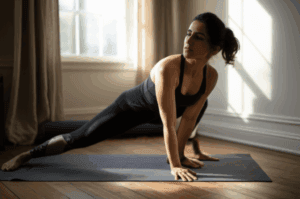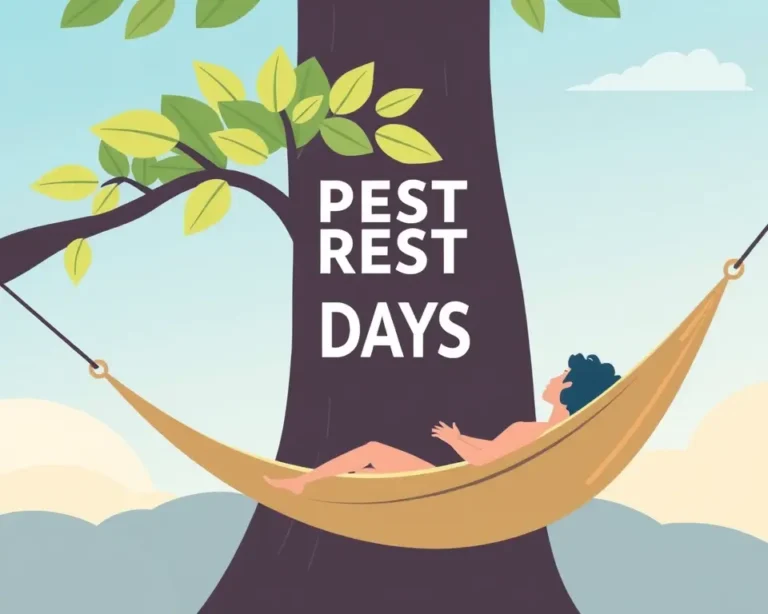It’s tempting to push yourself to the limit every day, especially when pursuing fitness goals. However, rest days are just as vital as exercise for a successful fitness regimen. Taking regular breaks allows your body to recover, repair, and grow stronger, preventing fatigue and injuries while boosting your overall performance.
The Crucial Role of Rest in Muscle Recovery and Growth
Muscle Repair and Growth
Exercise creates microscopic tears in your muscle tissue. During rest, cells called fibroblasts repair the damaged tissue, helping muscles heal and grow stronger. This repair process is essential for muscle development and adaptation to training stimuli. Rest is when your muscles rebuild and transform your body.
Glycogen Replenishment
During exercise, your body breaks down glycogen (stored carbohydrates) to fuel your workout. Rest days allow your muscles to replenish these energy stores, preventing fatigue and ensuring you have enough fuel for your next session. Depleted glycogen levels can lead to muscle fatigue and soreness.
Alleviating Muscle Pain and Soreness
Rest days give your body a chance to remove excess lactate from the muscles, helping to alleviate muscle pain and soreness. This is especially important after intense workouts that can lead to delayed onset muscle soreness (DOMS).
Preventing Injuries and Overtraining
Reducing Risk of Injury
When your body is overworked, you’re more likely to fall out of form, drop a weight, or take a wrong step, increasing your risk of injury. Overtraining also exposes your muscles to repetitive stress and strain, leading to overuse injuries. Rest days give your body the time it needs to recover and repair, reducing the likelihood of strains, sprains, and stress fractures.
Avoiding Overtraining Syndrome (OTS)
Overtraining syndrome occurs when you don’t adequately recover after intense training, leading to fatigue, declining performance, and potential injury. Pushing yourself too hard without rest can hinder your progress and even lead to a decline in performance.
Signs of Overtraining:
- Unusual muscle soreness after a workout that persists
- Inability to train at a previously manageable level
- “Heavy” leg muscles, even at lower exercise intensities
- Delays in recovery from training
- Performance plateaus or declines
- Prolonged general fatigue
- Increased tension, depression, anger, or confusion
- Poor-quality sleep
- Lack of energy, decreased motivation, moodiness
- Increased occurrences of illness
- Increased blood pressure and resting heart rate
Enhancing Performance and Mental Well-being
Improving Physical Performance
Rest days aren’t just about physical recovery; they also play a vital role in mental recovery. Pushing yourself too hard can lead to burnout, negatively affecting your motivation and overall performance. Taking breaks allows your mind and body to recharge, leading to improved focus, energy, and performance when you return to your workouts.
Keeping Hormones in Check
Working out hard can raise your cortisol levels (a stress hormone). Too much cortisol can interfere with muscle mass growth, make it easier to gain fat, and even weaken your immune system. Rest days help regulate your cortisol levels, allowing your body to return to a balanced state and continue functioning optimally.
Supporting Mental Health
Exercise rest days also benefit your mental health. Rest gives your brain downtime, allowing you to have a mental recharge. Taking time out of the gym provides time to recenter yourself and restore your brain, improving your mental health and leaving you mentally fresh.
Types of Rest: Active vs. Passive
Active Rest
Active rest involves engaging in low-intensity activities that promote blood flow and help in muscle recovery without placing additional stress on the body.
Examples of Active Rest:
- Light cardio, such as walking, easy swimming, or cycling at a low intensity
- Yoga or gentle stretching
- Foam rolling
Passive Rest
Passive rest involves complete rest, allowing the body and mind to recuperate from intense workouts. It’s crucial for recovery and injury prevention, especially after high-intensity workouts or competitions.
Examples of Passive Rest:
- Sleeping
- Reading
- Meditation
- Relaxing with a book
Strategies for Optimizing Rest and Recovery
Prioritize Sleep
Aim for 7-9 hours of quality sleep each night. Sleep is essential for muscle repair, hormonal control, and cognitive function.
Maintain Proper Nutrition and Hydration
Fuel your body with nutrient-dense foods and stay hydrated to support muscle recovery and replenish glycogen stores. Ensure adequate protein intake for muscle repair and synthesis, and consume carbohydrates for energy.
Incorporate Active Recovery
Engage in low-intensity activities on rest days to promote blood flow, reduce muscle stiffness, and accelerate recovery.
Practice Foam Rolling and Stretching
Incorporate stretching and foam rolling into your routine to improve flexibility, relieve muscle tension, and improve recovery between workouts.
Utilize Restorative Exercises
Activities like yoga, gentle stretching, or relaxation techniques can help unwind, reduce muscle tension, and improve flexibility.
Practice Mindfulness and Stress Management
Relaxation techniques such as meditation, deep breathing, or yoga can reduce stress levels and promote mental well-being, aiding in recovery and performance.
How Many Rest Days Should You Take?
General Recommendations
Generally, aim for one to two rest days per week. However, the amount of rest you need depends on your fitness level, exercise intensity, and training goals.
Beginners
Beginners should consider starting with an every-other-day workout schedule, taking three rest days per week.
Advanced Exercisers
If you regularly engage in long or challenging workouts, plan to rest one or two days per week. Space these out—take one rest day mid-week and the other at the weekend, or in between bigger workouts.
Listen to Your Body
Pay attention to how your body feels. If you’re experiencing excessive fatigue, muscle soreness, or persistent pain, it may be a sign that you need a rest day.
Sample Weekly Workout Schedule with Rest Days
Here’s an example of how to incorporate rest days into your weekly workout routine:
- Monday: Strength Training (Upper Body)
- Tuesday: Strength Training (Lower Body)
- Wednesday: Cardio
- Thursday: Rest Day (Active Recovery – Yoga or Light Walk)
- Friday: Strength Training (Full Body)
- Saturday: Long Run or Intense Cardio
- Sunday: Rest Day (Passive Recovery – Relax, Read, Sleep)
By prioritizing rest and recovery, you’ll not only prevent injuries and burnout but also set yourself up for long-term success in your fitness journey.







